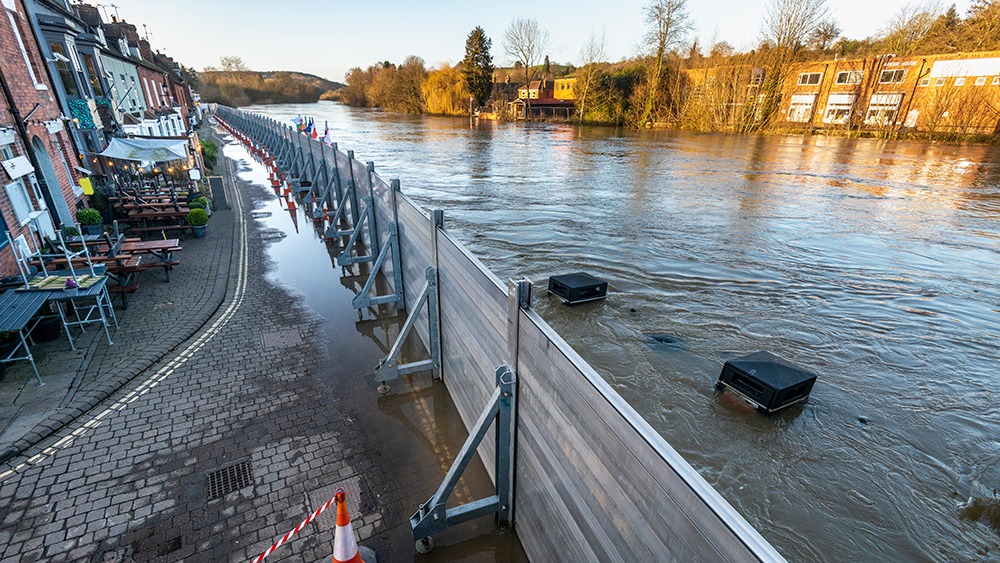The landscape of environmental, social, and governance (ESG) and climate risk is rapidly evolving, with many regulatory and policy changes on the horizon. The U.S. Securities and Exchange Commission’s (SEC) final climate risk disclosure rules are still pending; however, several states have also enacted or are likely to enact regulatory requirements, such as the recently passed California Climate Corporate Data Accountability Act and the Climate-Related Financial Risk Act.
This rapid evolution not only makes tracking policy changes challenging, but it also creates uncertainty for organizations attempting to set strategy and make decisions. However, regardless of the timing and outcomes of policy developments, organizations can take a number of no-regrets actions now to increase resilience, no matter what the ESG and climate regulatory landscapes bring.
There are several reasons to act now, rather than wait:
Many businesses have begun responding to these shifting priorities. Approximately 70 percent of companies intend to get ahead of the SEC disclosure rule, according to a survey released by PwC and software company Workiva in March 2023. This is a pragmatic stance for most companies; to comply, most businesses are expected to spend at least $750,000 in the rule’s first year, so starting to prepare now can help anticipate and manage future costs. Some companies have also already invested in long-pursued strategic and transformative ESG goals and may have begun to assess Scope 3 emissions, which include emissions from suppliers and throughout the value chain.
“No regrets” actions to take now
In response to these drivers, you can take practical actions now that will benefit your organization and stakeholders in tangible ways that go beyond compliance.
Update operations and maintenance with a resilience mindset
Actions to consider include testing and inspecting emergency response plans, selecting fire-resistant building and landscape materials, enhancing structural elements, installing flood barriers to protect equipment, and enabling critical-function buildings to resume operations within 24 hours.
Perform climate risk assessments
Identify, prioritize, and prepare to report potential climate-related risks relevant to your company, such as the number of buildings needing weather adaptability modifications to withstand and recover from anticipated climate extremes. To incorporate mitigation actions into strategic business planning, you may need to have a framework to identify multiple tiers of physical and operational resilience measures, as well as risks associated with the transition to a low-carbon economy. This framework could factor in the effectiveness, cost, and plausible time frame for each measure, helping you integrate those measures into an actionable asset risk management system.
Develop and implement an integrated sustainability strategy
Many organizations have small-scale sustainability efforts underway, but it’s time to shape those into enterprise-wide strategies that can manage large-scale risks and opportunities, including reducing greenhouse gas emissions and increasing energy and resource efficiency. To set a strategy, organizations need to assess the issues that are material to their business and their realm of control, identify opportunities and partnerships, and develop a road map to achieve sustainability goals. Engaging stakeholders in a materiality assessment, which asks for feedback on the importance of specific ESG issues, can help you understand where to focus efforts and how to communicate about ESG priorities and performance.
Invest in talent
If you haven’t already, begin building internal capabilities related to ESG and sustainability, whether through training for existing staff or by hiring new talent focused on these areas. Your investment now can make it easier to navigate the changing ESG landscape. It can also strengthen talent retention by demonstrating investment in values employees care about, as well as investment in your company’s future resilience and sustainability.

Risk of asset damage can derail financial performance goals, affect lender decisions, and impact insurance underwriting.

![]() Customers are shifting market trends toward sustainably sourced products and resilient properties.
Customers are shifting market trends toward sustainably sourced products and resilient properties.

Investors expect accurate, transparent, and consistent financial and nonfinancial assessments of risks and opportunities for the full value chain.

An organization’s reputation increasingly depends on its performance on ESG and climate issues. Your ESG strategy should consider employee values, talent retention, and cost reduction.
“No regrets” actions can provide new levels of value for your organization
These actions can improve present and long-term operations, help meet performance and ESG goals, and strengthen stakeholder relationships. Robust risk management can turn a compliance issue into a sustainability or resilience opportunity.
- Strategic mitigation of climate-related risks can reduce vulnerability and impacts on assets, operations, and reputation, including recovery and remediation costs. It can also improve your readiness to respond to climate or ESG regulatory and policy changes.
- Greater understanding of the entire value chain can help anticipate risks and opportunities and prioritize action planning.
- You can increase your climate intelligence with data-driven decision-making regarding climate-driven forces and uncertainties, for both physical risks (e.g., flooding and water scarcity) and risks from the transition to a low-carbon economy (e.g., carbon taxes and switching to renewable energy).
- Aligning your business practices with organizational ESG and sustainability goals and policies can give you a competitive advantage.
- Enhanced relationships with customers, investors, and lenders through more transparent and resilient business operations will bolster your reputation.
Haley & Aldrich’s experts provide strategic advice and solutions for climate risk assessments and resilience, sustainability road maps, environmental and social due diligence, and environmental justice concerns.
Contact the authors below to learn more about how Haley & Aldrich can guide you through the evolving regulatory landscape and increasing complexities related to climate and sustainability to best position your organization for success.
Published: 6/9/2023
- Decommissioning and demolition
- Environmental and waste facility construction
- Remediation construction
- Coal combustion residuals management
- Emerging contaminants
- Environmental due diligence
- Environmental risk assessment
- Sediments
- Site characterization
- Vapor intrusion
- Remediation
- Earthquake engineering
- Natural resources
- Solid and hazardous waste
- Water quality
- Dams and embankments
- Sustainability
- Resilience
- Groundwater
- Stormwater
- Surface water
Authors

Market Leader, Energy

Senior Associate, Climate Resilience Specialist




